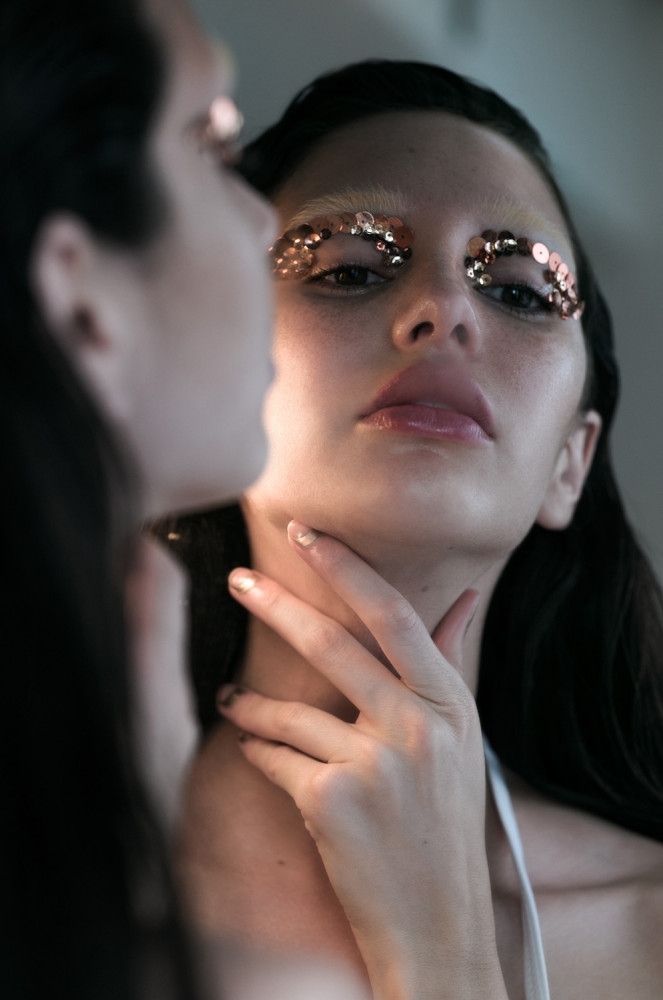
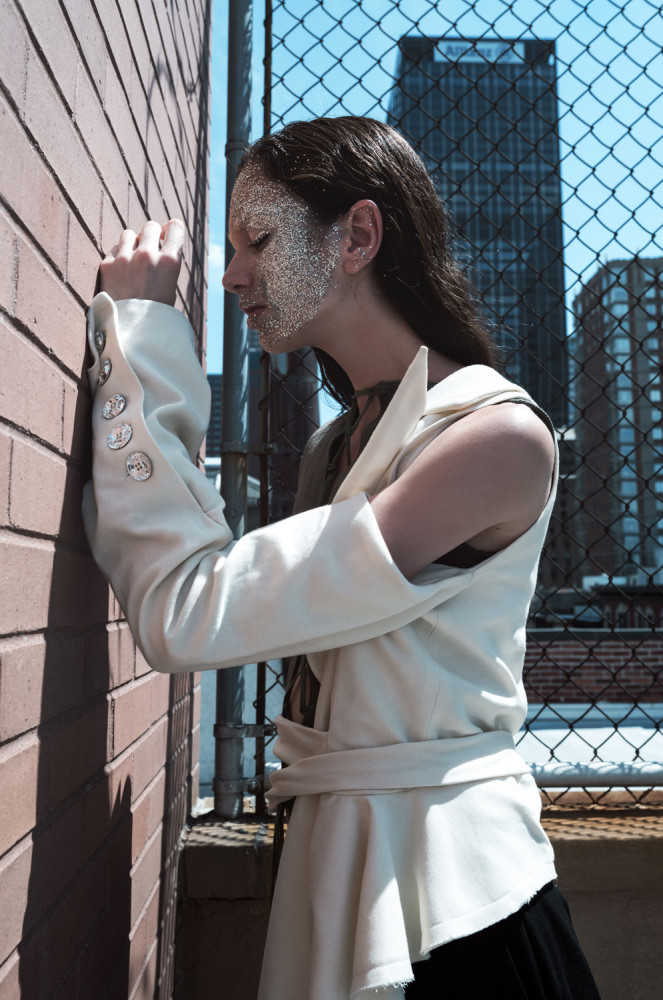
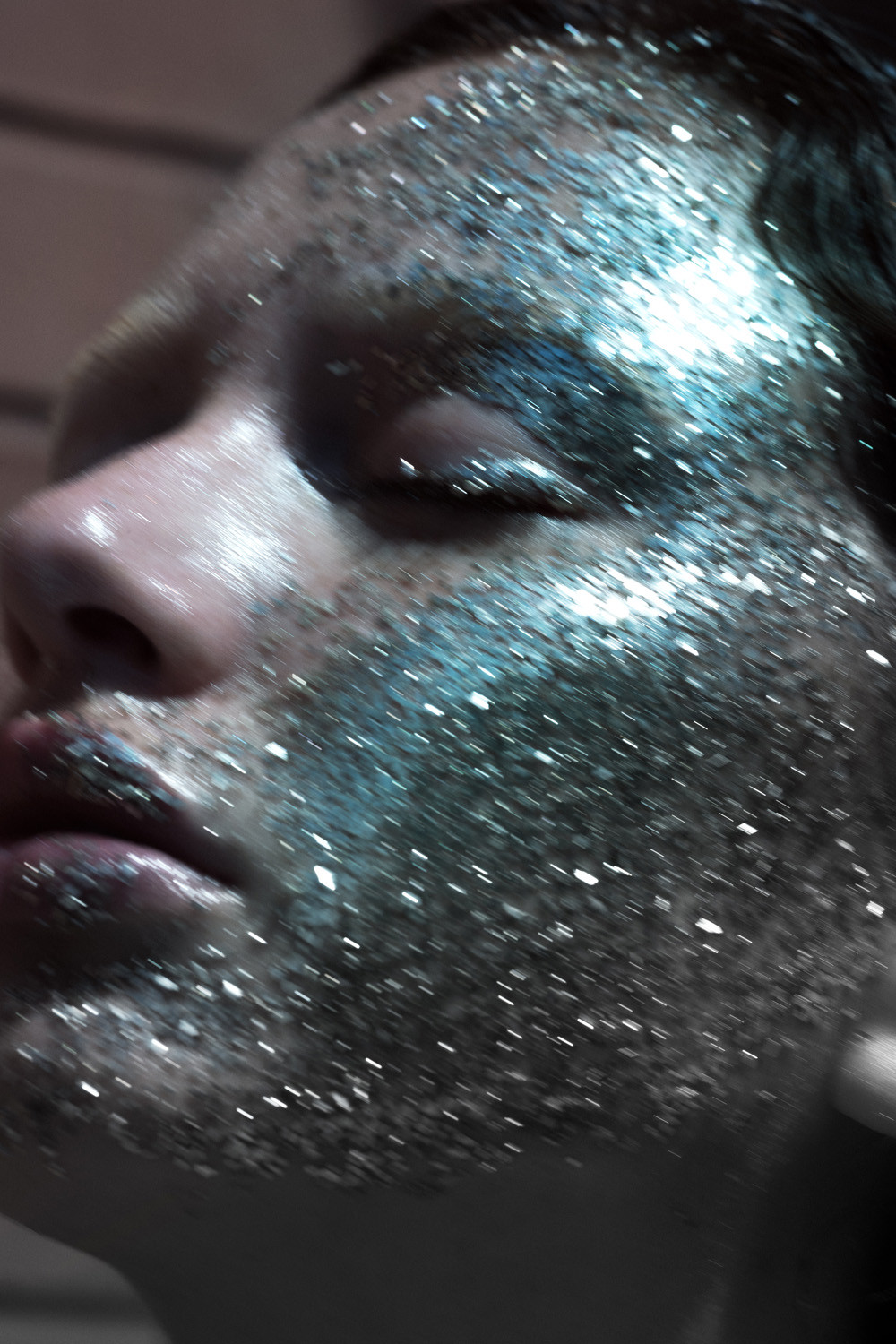
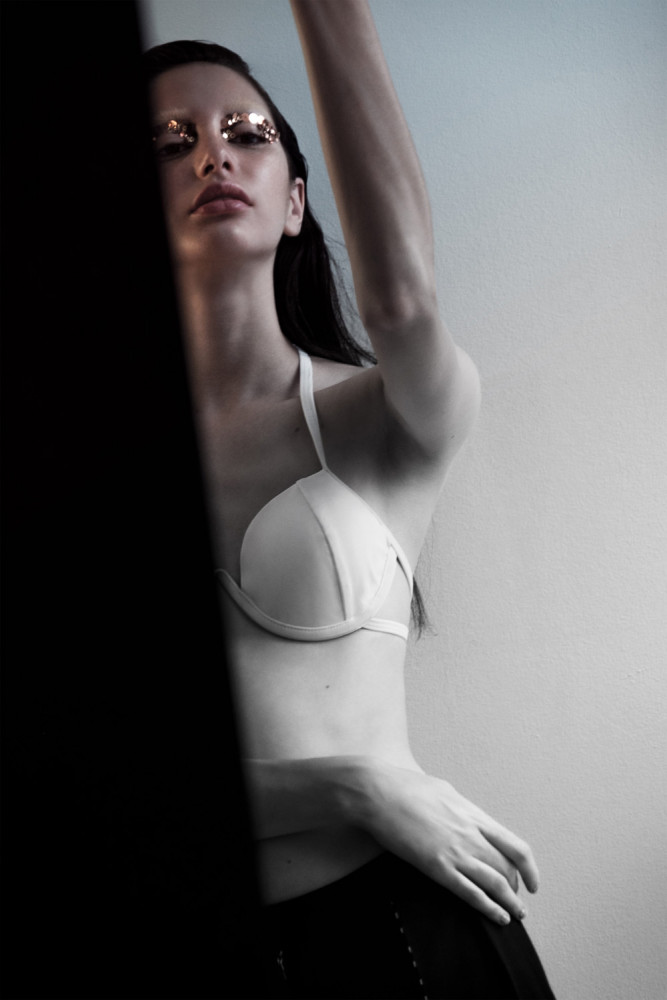
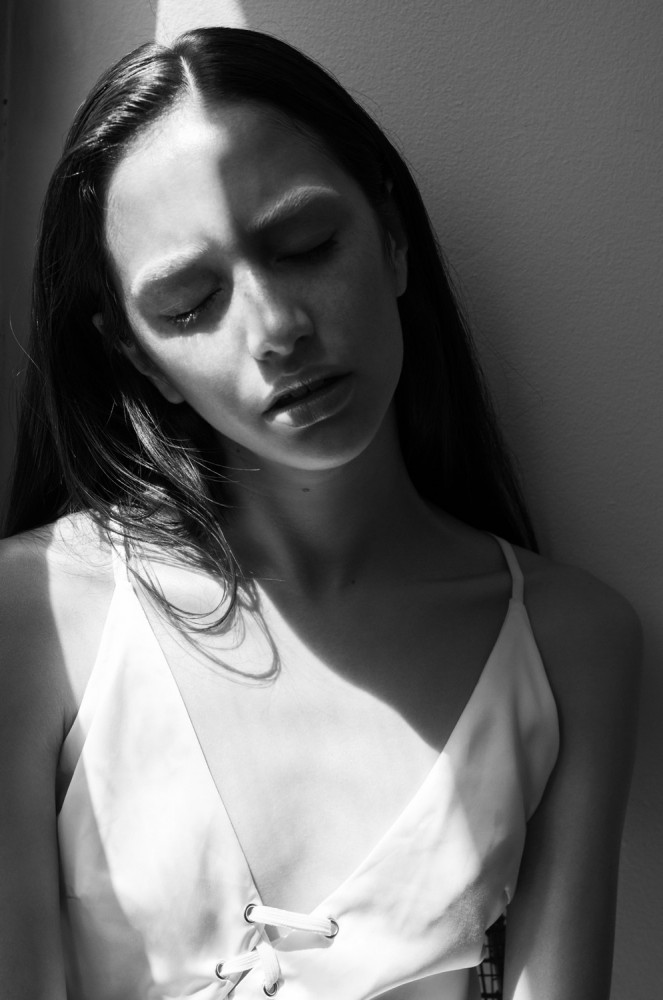

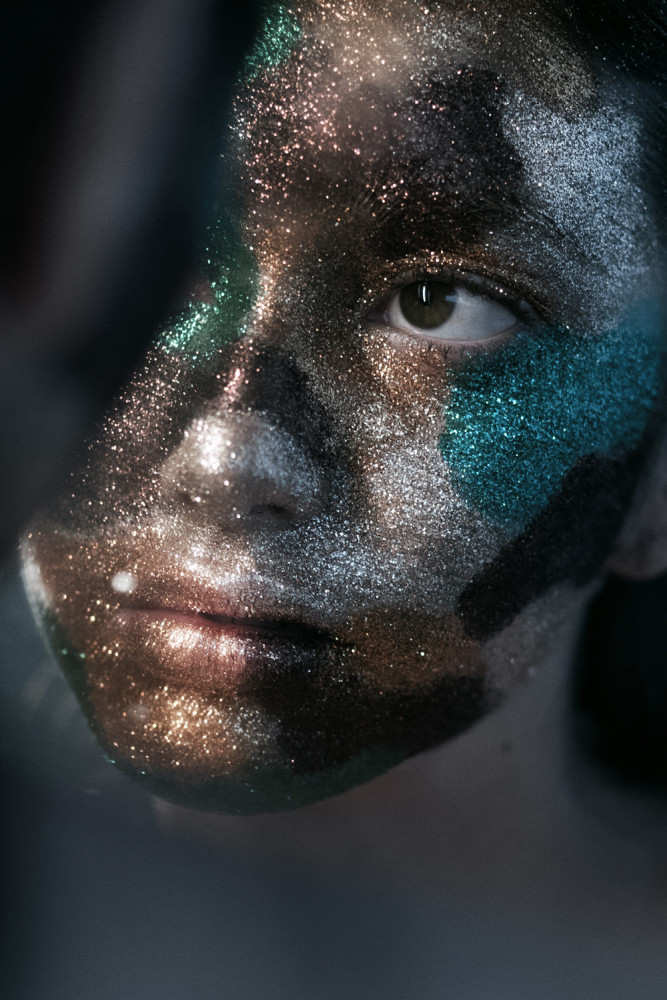
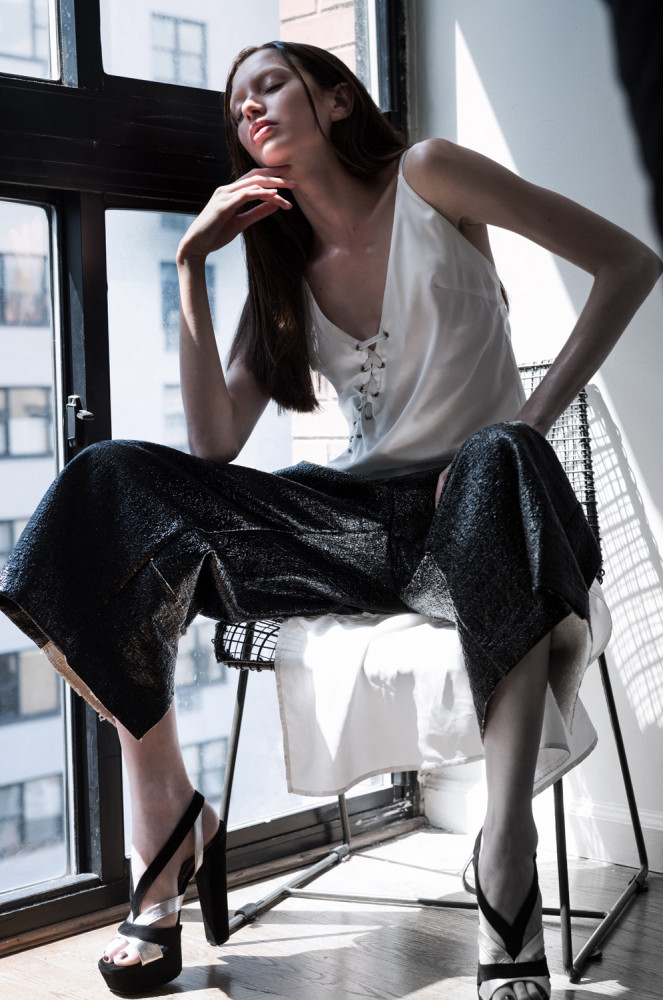
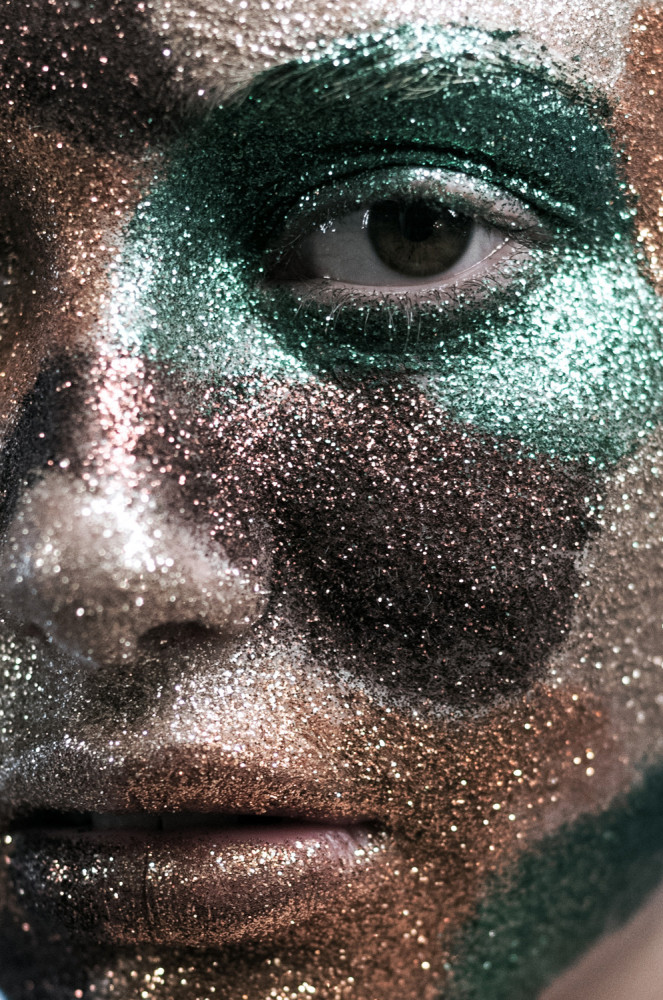
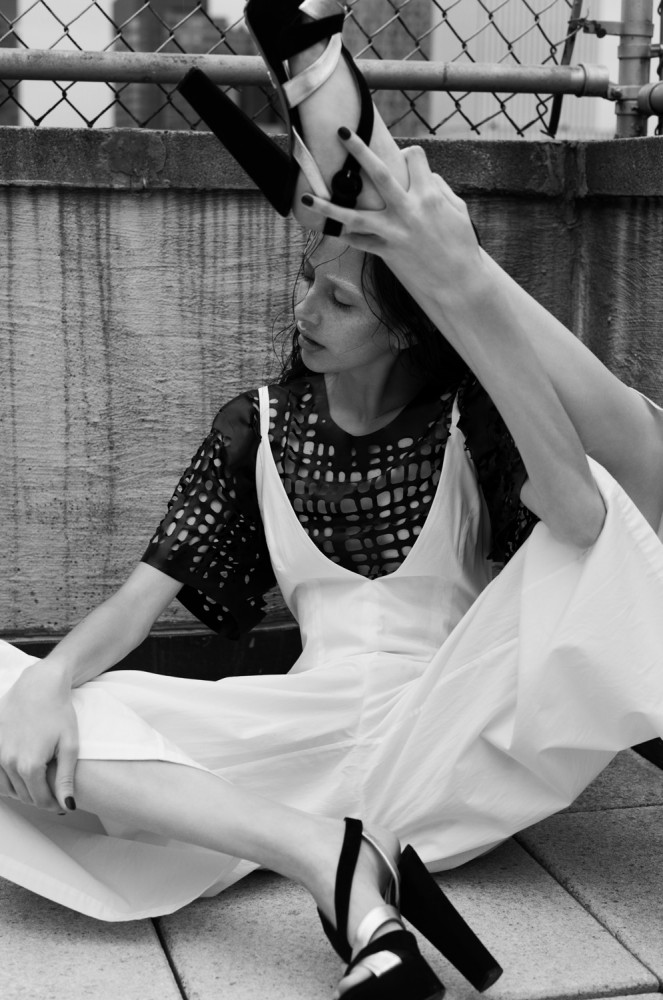
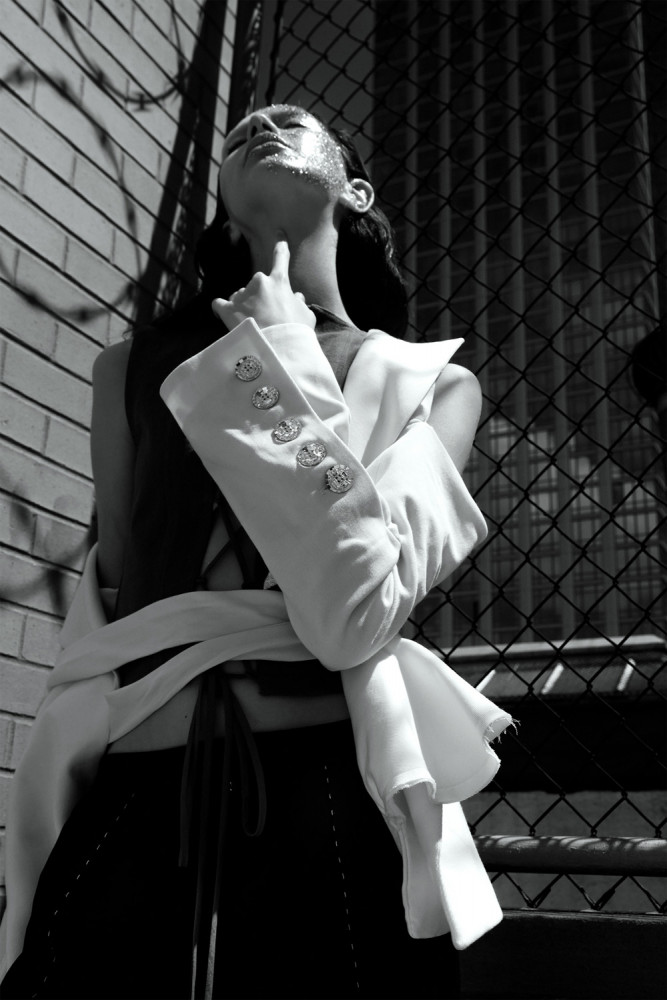
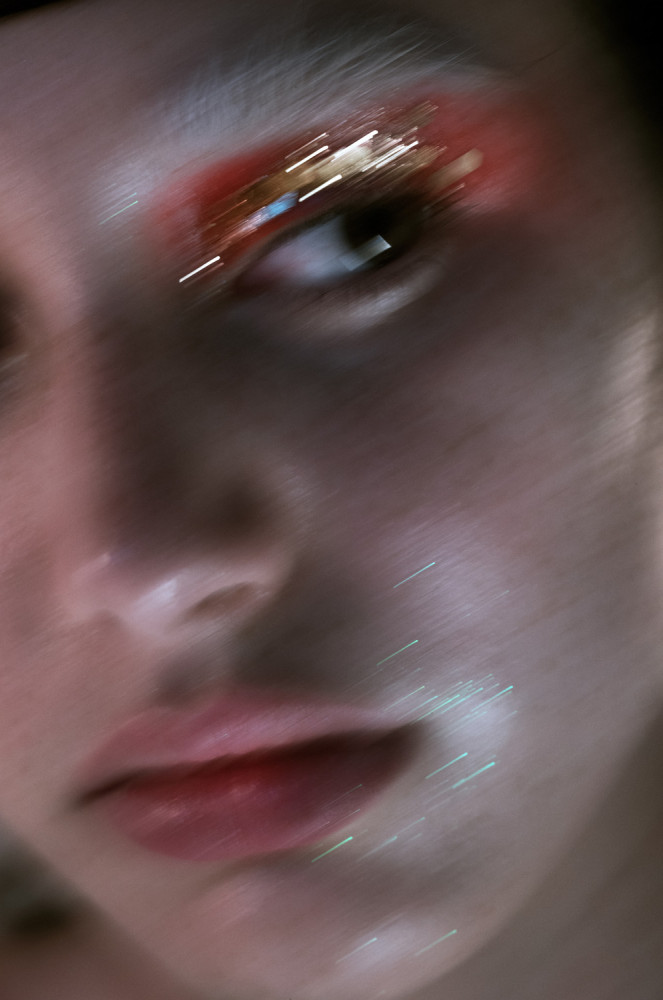
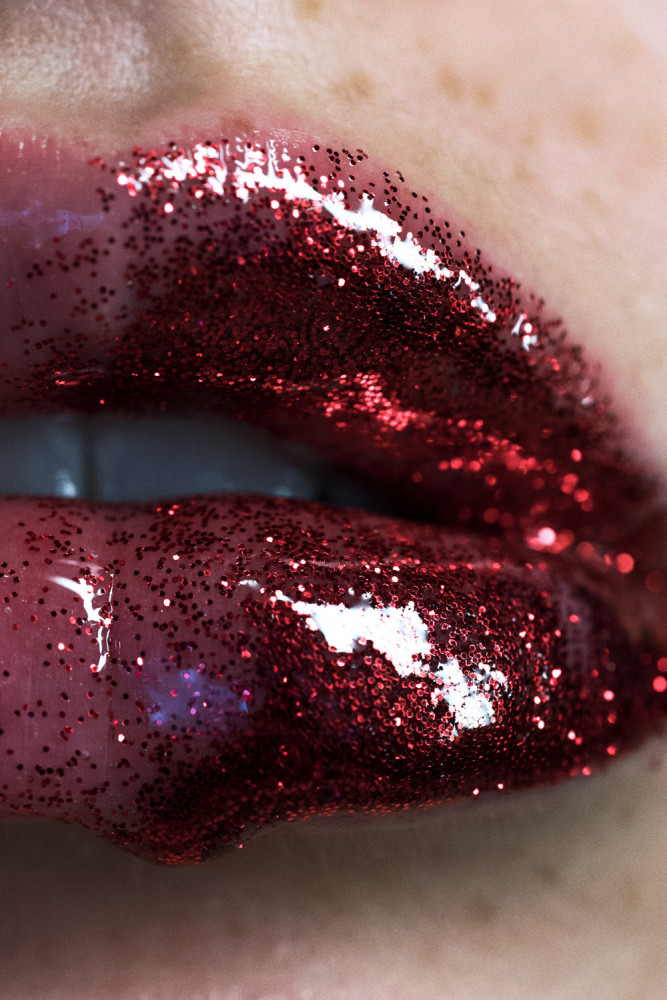
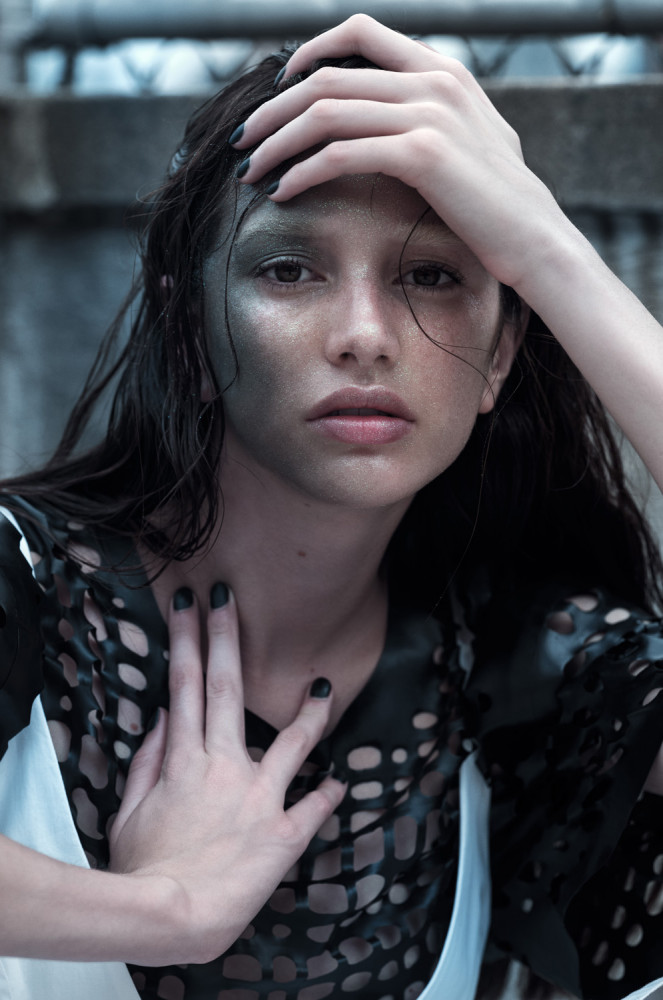
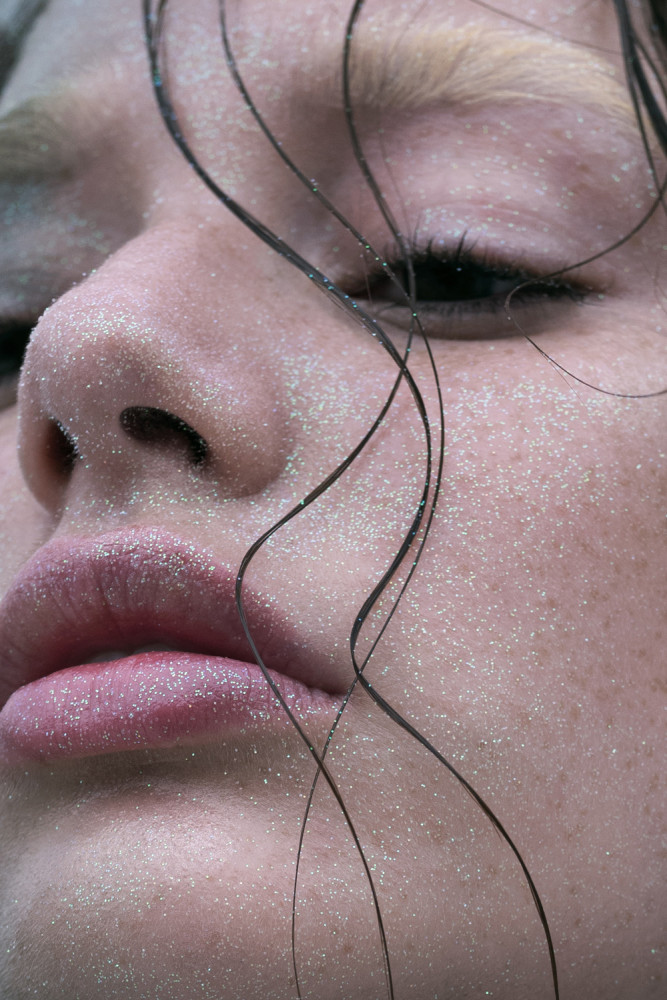
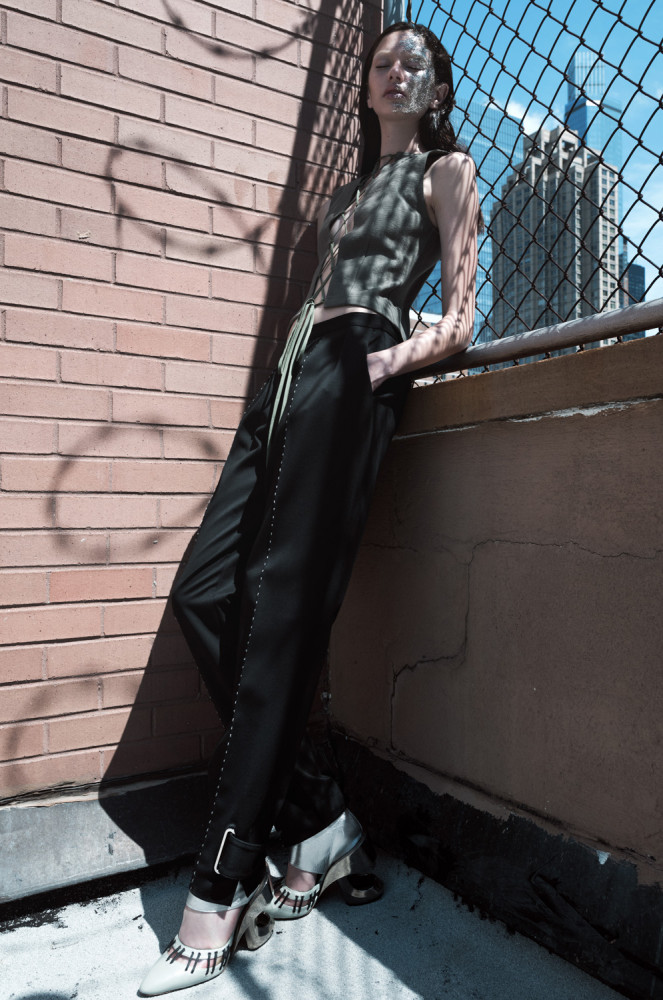
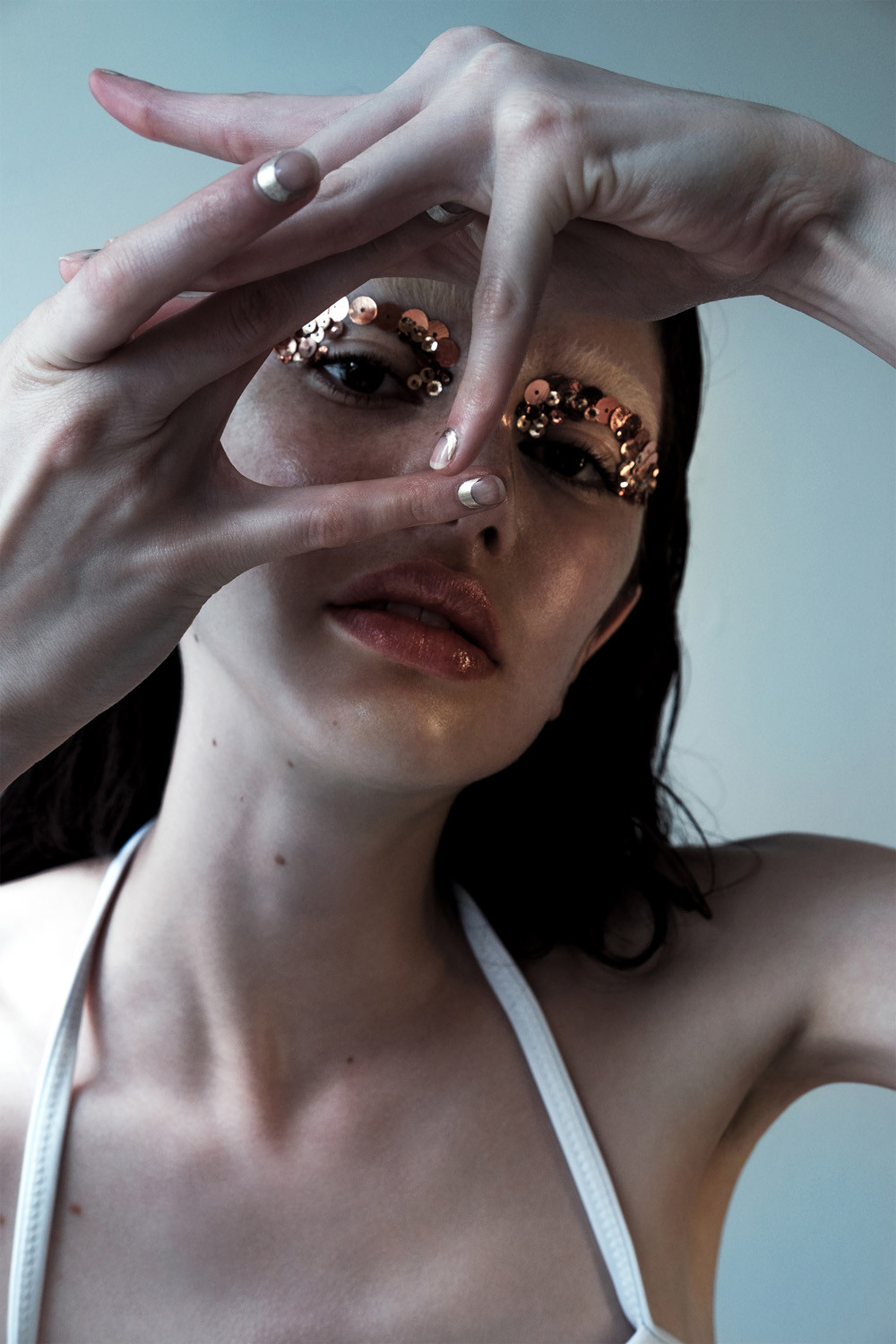



















INTERVIEW
Aglaja Brix & Florian Maas
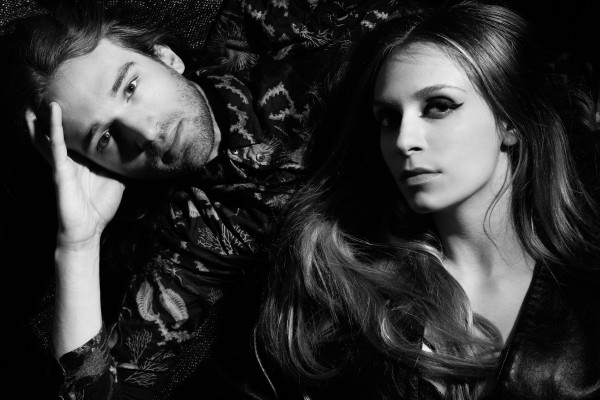
PHOTOGRAPHY Aglaja Brix & Florian Maas STYLING Angel Macias HAIR Kiyonori Sudo MAKEUP Angelina Cheng NAILS Ada Yeung MODEL Karime Bribiesca @ Fusion Models CAMERA Leica S (007) with Summarit-S 35 mm f/2.5 Asph, Summarit-S 70 mm f/2.5 Asph (CS) and APO-Macro-Summarit-S 120 mm f/2.5.
In ‘I want to believe’, Aglaja Brix and Florian Maas use every kind of genre – from beauty to street photography. Shot in New York, this resulted in a dynamic story full of exciting perspectives, which plays with contrasting, glitzy beauty images with something of a camouflage look.
S Magazine: ‘I want to believe’ is a mix of beauty and street shots. Why didn’t you use one consistent form?
In a city like New York, beauty and street often share thematic approaches and can be combined with no problem. That applies to everyday life for New Yorkers just as much, hopefully, as to our series. Whether it’s a fashion spread or a beauty shoot, we always try to mix various stylistic elements in all our series, to add tension to the story – after all, a good film also has different approaches and settings.
What’s this story about?
In truth, this story is one of the most spontaneous series we’ve ever photographed. We had met the make-up artist, Angelina Cheng, just a few days earlier on a photo shoot for Le Mile magazine, and we immediately hit it off. Because the following week the preparations for Fashion Week would begin and she would be totally caught up in that, we had and wanted to act spontaneously, so we shot this series straight away. The basic idea was to do a beauty shoot, though the soft, lovely glitzy look emerged from the “army” theme – though interpreted very freely: the camouflaged face, the sparkling red gloss dripping off the lips, the shimmering, green sheen on part of the face... The model’s expressions and poses also underline this abstract fusion of passion and sensuality.
We met up at the make-up artist’s place to prepare things, and we were all clear about the setting the story needed to have: her apartment in Hell’s Kitchen has large, loft windows that give it this beautiful simplicity, and there was also a great, fenced-in rooftop.
You spent a few months in New York last year. As far as fashion photography is concerned, what differences do you see between the US and Europe?
We were lucky enough to be able to build up a great network very quickly. What was noticeable was how much more open people living and working in New York are. A big difference between New York and Germany specifically, is for sure the less complicated and quicker access to well-known brands, the diversity of ranges is simply bigger. What was also interesting was the often very different perceptions from one continent to the other. Here we would always hear, “you must go to New York, it’s much more creative there!”, while many people in New York see Europe as more artistic and the US as more commercial. The grass is always greener on the other side… ;-) Whatever, the fact is that New York as always has that special vibe – the city still has its inspiring magic and is a Mecca of fashion.
What role does styling play in your photography? To what degree is it a component, a form of expression?
For a newly developed concept, the styling is indispensable. There were even cases where the styling idea was the first inspiration for a new photo shoot. The saying “clothes make the man” – especially within the context of the fashion industry – actually answers this question, because the goal of a fashion series is to convey the whole concept, the idea and the feeling behind it. It’s the interplay of location, styling and model – or rather the model’s poses and expressions – that give meaning to the story being told.
Of course, there are also photo shoots where the styling does not set the basic premise for the story and things tend to happen more spontaneously; but the styling is definitely essential for the meaning and expression of the outcome.
You speak of your models as muses. To what degree are they the inspiration for certain situations or for the whole spread? What criteria do they need to fulfill?
Just like actors in a movie, everything in a photo series is made or broken by the model’s vibe. The chemistry has to work. For example, a model becomes a muse when she suggests poses and brings in a certain creativity that is then reflected in the pictures. A muse understands what we want to convey in the photos, and helps us to tell the story. In the end, an exciting photo series is always about the teamwork, and, of course, the person who ultimately appears in the pictures has a great part to play in that. We can confirm that the mobility and charisma of a model in front of the camera is very important – and one could say that we do have a preference for special, strong types.
With personal series or articles for magazines, it’s fine to talk about muses, because the creative part, as well as the conceptual involvement of the team members, dominates. In the case of commercials or simple jobs you can’t talk of muses, but rather of models – that’s quite simply due to the framework.
It you look at our work carefully, you’ll see that we like to work with the same models various times – they become a source of inspiration and our muses for different concepts. The best example is seen in a GoSee, the last one that took place in our studio with a number models. Most of the girls are really great and show they able to do professional work, but a few are immediately inspiring; you want to get them back in front of the camera as soon as possible!
How does a photographer duo actually work? How do you work together during the picture-taking, and how to do work on the creative-conceptual side?
Our collaboration – that has now been going on for two and a half years – works in a very uncomplicated manner; there’s no fixed division of roles. We got together back when we completed our time at university, both as photographers.
In fact, the work emerged from complementary abilities, because Florian brought technical professionalism into the mix, while Aglaja was responsible for the creative part. That was at the beginning. In the meantime we influence each other, and we’ve blended into a team based on equal value: both contribute ideas, are producers and technicians. Even so, there is a certain tendency for Aglaja to deal with styling, hair and make-up, while Florian takes care of the equipment and sometimes researches the locations.
Whenever possible, we work with two cameras simultaneously. Sometimes it’s interesting to see how the models react to that. At first they might be irritated by which camera to interact with, but they soon see how it works: when the model interacts and fixes on one camera, then the other camera captures the sidelines, and another perspective.
Of course, depending on the project, we slip more or less into each role; but it always happens very automatically and without our having to give it too much thought. We inspire each other, both during the shooting action, during the preparations, and during daily life when the ideas are conceived. It all sounds very self-evident, but we are aware that it is a gift to have found someone with whom to work as part of a harmonious and creative team.
You’ve already worked with the Leica S and Leica SL. Do you have a preference between the two?
They’re both great cameras. Of course, the S is heavier and larger than the SL, but in a direct comparison the pictures are a tick more detailed. However, so far we’ve always used the S with a fixed focal length and the SL with a zoom lens, so it’s rather hard to make a direct and fair comparison. In any case, both cameras take great pictures.
On the SL we particularly like the digital viewfinder. This can show you the end picture if you want, and that’s very practical when you’re working with constant light and experimenting around. Also the touch display feature and the quick picture processing – a great, new feeling when working!
In the end, it depends on each shooting situation – after all, we’re talking here about two absolutely professional cameras.
What focal length do you prefer?
We don’t have a particular favourite here either. We really like everything from super wide angle to tele zoom. As mentioned, we used the SL with 24-90 zoom lens for another shooting – the flexibility was really great and we also used the whole area. It always depends on the situation and the shot we’re looking for. Stylistically speaking, however, we would not want to do away with the wide angle lens.
What photographic plans do you have for this year?
The year’s beginning with the publication of new photo spreads – in addition to the Leica S Magazine, there’s also Hunger Magazine, for example – and a vernissage event on 20.01 for Berlin’s Fashion Week, because we’ve created a new advertorial for a Berlin boutique. What’s more we want to return to spend time in NY again this year, and in LA after that. Another important point on our list is the collaboration with a photography agency. With this in mind we are, of course, looking forward to new photo shoots and possibilities.